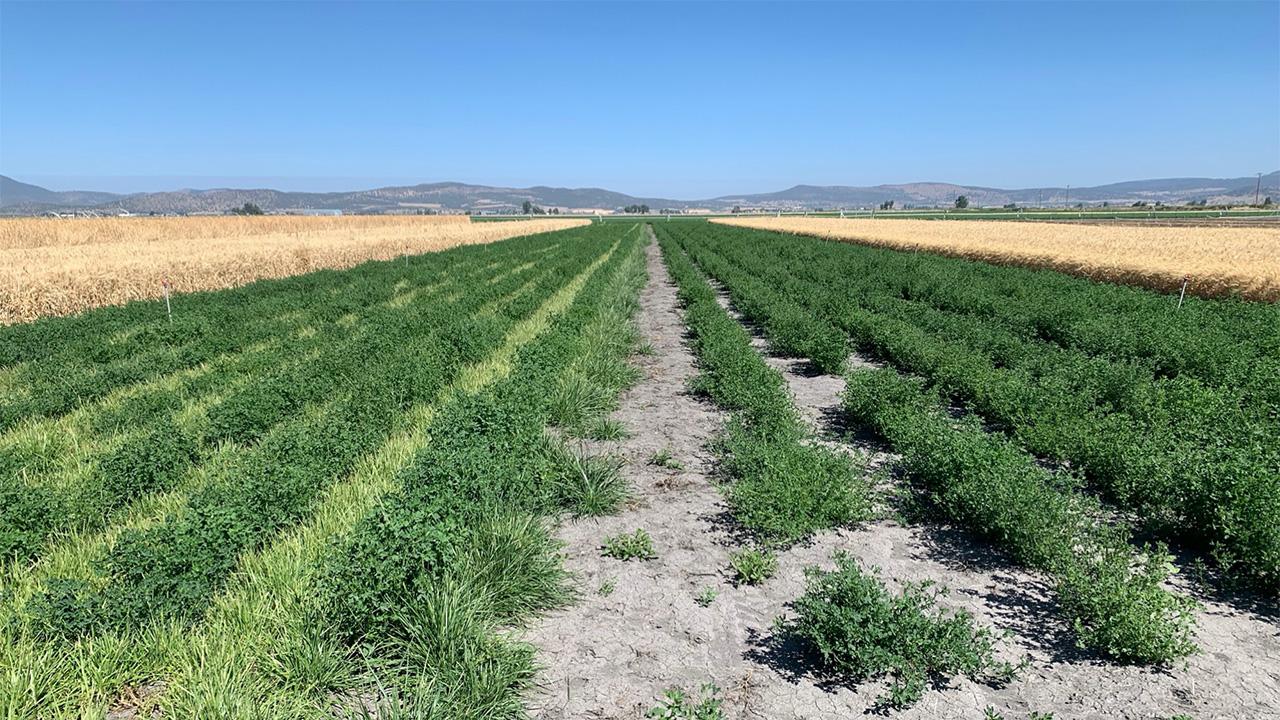
Brummer: Ag must shift to multi-crop systems
Plant breeders have a role, but federal policy must set the course
Plant breeders can help America re-orient our dominant system of single-crop agriculture toward a multi-crop landscape that is less costly to farmers, better for the environment, helps slow climate change and still yields a profit. But, those efforts are just one part of a complex system that also will require the buy-in of farmers themselves, supported by political will, new agricultural policies and the cooperation of scientists, seed companies, machinery and fertilizer manufacturers, insurance providers, banks and environmental groups.
Charlie Brummer and colleagues made the argument for shifting the entire nation to multi-crop farms in a paper published this week in Proceedings of the National Academy of Sciences. That shift would relieve the unsustainable level of damage being wreaked by single-crop systems, and the researchers offered an outline for advocating policy change that Brummer said is urgent.
“Many aspects of our current agricultural systems are unsustainable, but we often support them with government policy. We really need to look seriously at alternatives that build resilience together with productivity,” said Brummer, a professor in the UC Davis Department of Plant Sciences and director of the Center for Plant Breeding. “Some farmers and ranchers are doing this already and they know it makes sense. Bringing these alternatives into the mainstream across the nation is the challenge facing us today.”
If policy and industry re-oriented to support multi-crop farming, plant breeders could then develop new varieties of crops to thrive in these diverse systems. For example, companion plants can be bred for planting in seasonal rotations, among cash crops and around the edges of fields.
Ag success has caused problems, but solutions exist
Modern agriculture has produced astounding yields capable of feeding a growing population, but the cost has been ecosystem destruction, loss of biodiversity, erosion, and pollution to soil, water and air, the researchers noted. Agriculture is responsible for nearly 11 percent of the human-made greenhouse gases produced in the United States each year, according to the U.S. Environmental Protection Agency. The decay is happening “at scales that threaten not only future crop productivity… but (also) stable access to the most basic public goods such as clean air, pure water and healthy food,” Brummer and colleagues warned.
“Given the role policy has played in reducing diversity in the agricultural landscape, policy changes will be needed to make adoption of alternative systems more feasible and desirable,” the researchers wrote. “If and when policy incentives and markets align with multi-crop systems, then plant breeding programs will be necessary to optimize those systems.”
The researchers called for greater investment into researching how plants such as pennycress, intermediate wheatgrass and hairy vetch could be made even more helpful for multi-cropping systems. Winter cover crops could become more profitable by being bred for early-season vigor, early flowering and tolerance for cold. Plants grown in hedgerows for pollinators or between rows of cash crops to suppress weeds could be bred to increase benefits such as fixing nitrogen in and adding nutrients to the soil.
Brummer also called for a comprehensive approach toward agricultural diversification that includes marketing plans for new crops, federal subsidies that support them and widening farmers' access to land ownership.
Related links
Toward plant breeding for multi-crop systems, V. M. Moore, T. Peters, B. Schlautman and E. Charles Brummer. Proceedings of the National Academy of Sciences. DOI #10.1073/pnas.2205792119
Media Resources
- Trina Kleist, UC Davis Department of Plant Sciences, tkleist@ucdavis.edu (530) 754-6148
